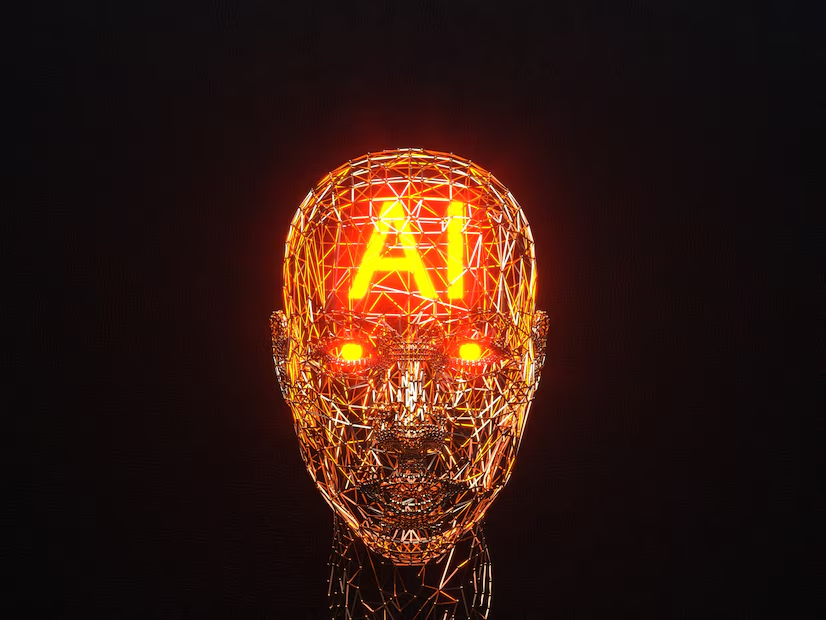Harness AI Power: 8 Revolutionary Enhancements for Today and Tomorrow
Introduction
Artificial Intelligence (AI) is transforming the world at an unprecedented pace. From smart assistants like Siri and Alexa to complex algorithms that predict market trends, AI is everywhere. But as AI continues to advance, there’s a significant concern: increasing energy consumption. As we delve deeper into the 21st century, the energy demands of AI are becoming a critical issue that needs addressing. This article explores how AI advancements are driving energy usage and what it means for our future.
Understanding Power of AI and Energy Consumption
AI, or Artificial Intelligence, refers to the simulation of human intelligence in machines. These systems are capable of learning, reasoning, problem-solving, and making decisions. However, the operations of AI systems, especially those involving deep learning and complex computations, require substantial amounts of energy. For instance, training a single AI model can consume as much electricity as a human would in a lifetime.

Historical Context of AI Energy Usage
In the early days, AI systems were relatively simple and did not require much power. However, as technology evolved, so did the complexity of AI models. The rise of machine learning and deep learning has exponentially increased energy demands. For example, training modern neural networks involves processing vast amounts of data, which requires significant computational power and, consequently, more energy.
Factors Driving Increased Energy Consumption
Several factors contribute to the rising energy consumption in AI:
- Data Processing and Storage: The sheer volume of data generated and processed by AI systems is staggering. This data needs to be stored and managed, which requires energy.
- Machine Learning and Deep Learning Algorithms: These algorithms are computationally intensive. The training process involves numerous iterations and adjustments, consuming vast amounts of power.
- Hardware Requirements: Advanced AI models need powerful hardware, such as GPUs and TPUs, which consume more energy than traditional processors.
The Role of Data Centers
Data centers are the backbone of AI operations. These facilities house the servers and hardware needed to process and store data. However, data centers are notorious for their high energy consumption. In fact, data centers consume about 1% of the world’s electricity, and this number is expected to rise as AI applications grow.
AI in Everyday Life
AI has become an integral part of our daily lives. From smart home devices that adjust lighting and temperature based on our preferences to AI-powered personal assistants that help manage our schedules, AI’s convenience comes with a hidden cost: increased energy usage. Each smart device connected to the internet and processing data adds to the overall energy demand.
Industrial and Commercial AI Applications
In industries such as manufacturing, logistics, and finance, AI is revolutionizing operations. For instance, AI-driven automation in factories can optimize production processes, but it also requires energy to operate. Similarly, AI in logistics can streamline supply chains, yet the data processing involved consumes power. In finance, high-frequency trading algorithms run continuously, demanding significant energy resources.
AI Research and Development
The field of AI research is constantly pushing the boundaries of what is possible. However, this progress comes at an energy cost. Supercomputers and high-performance computing clusters used in AI research consume enormous amounts of electricity. As AI models become more complex, the energy required for research and development will continue to rise.
Sustainability Challenges
The environmental impact of AI’s energy consumption is a growing concern. The carbon footprint of data centers and AI systems contributes to global warming. Furthermore, the demand for electricity to power these systems often leads to increased fossil fuel consumption, exacerbating environmental issues. Addressing these sustainability challenges is crucial for the future of AI.
Efforts to Mitigate Energy Usage
Fortunately, there are efforts underway to reduce AI’s energy consumption.
- Renewable Energy Sources: Some data centers are transitioning to renewable energy sources, such as solar and wind power, to reduce their carbon footprint.
- Energy-efficient AI Algorithms: Researchers are developing algorithms that require less computational power, thereby reducing energy usage.
- Industry Initiatives: Tech giants like Google and Microsoft are investing in sustainable practices and technologies to minimize the environmental impact of their AI operations.
Innovations in Energy-efficient AI
Innovation is key to addressing the energy challenges of AI.
- Advances in Hardware Technology: Development of low-power chips specifically designed for AI can significantly reduce energy consumption.
- Low-power AI Chips: These specialized chips are optimized to run AI algorithms efficiently, consuming less power than traditional processors.
- Software Optimizations: Improvements in software can enhance the efficiency of AI systems, reducing the energy required for computations.
Case Studies
Several companies are leading the way in implementing energy-efficient AI solutions.
- Google: By using AI to optimize the cooling systems in its data centers, Google has significantly reduced energy usage.
- IBM: IBM’s development of energy-efficient hardware and AI algorithms has set a benchmark for the industry.
- Tesla: Tesla’s AI-driven autonomous vehicles are designed to be energy-efficient, balancing performance with sustainability.
Policy and Regulation
Governments and international bodies are recognizing the need for policies to regulate AI’s energy consumption.
- Government Policies: Some governments have implemented policies to encourage the use of renewable energy in data centers and AI operations.
- International Regulations: Global agreements and standards are being developed to address the environmental impact of AI.
- Impact of Policies: These regulations can drive innovation and adoption of energy-efficient technologies in AI.
The Future of AI and Energy Usage
As AI continues to evolve, so will its energy demands. However, technological breakthroughs and sustainable practices can help balance AI advancements with energy efficiency. Predicting the future involves considering potential innovations, such as quantum computing, which could revolutionize AI and reduce energy consumption dramatically.
Conclusion
In conclusion, AI advancements are driving increased energy usage, posing significant sustainability challenges. However, through innovation, policy, and industry initiatives, it is possible to mitigate these impacts. Balancing the benefits of AI with its environmental footprint is essential for a sustainable future.
FAQs
What is AI’s energy consumption? AI energy consumption refers to the amount of electricity required to power AI systems, including data processing, storage, and algorithm execution.
Why is AI energy usage increasing? AI energy usage is increasing due to the growing complexity of AI models, the vast amounts of data processed, and the powerful hardware required to run these systems.
How can we reduce AI energy consumption? Reducing AI energy consumption can be achieved through the use of renewable energy sources, the development of energy-efficient algorithms, and advancements in low-power hardware technology.
What are the environmental impacts of AI energy usage? The environmental impacts include increased carbon emissions from data centers and higher demand for electricity, often sourced from fossil fuels, contributing to global warming.
Are there any energy-efficient AI technologies available? Yes, there are energy-efficient AI technologies available, such as low-power AI chips, optimized algorithms, and the use of renewable energy sources for data centers.




